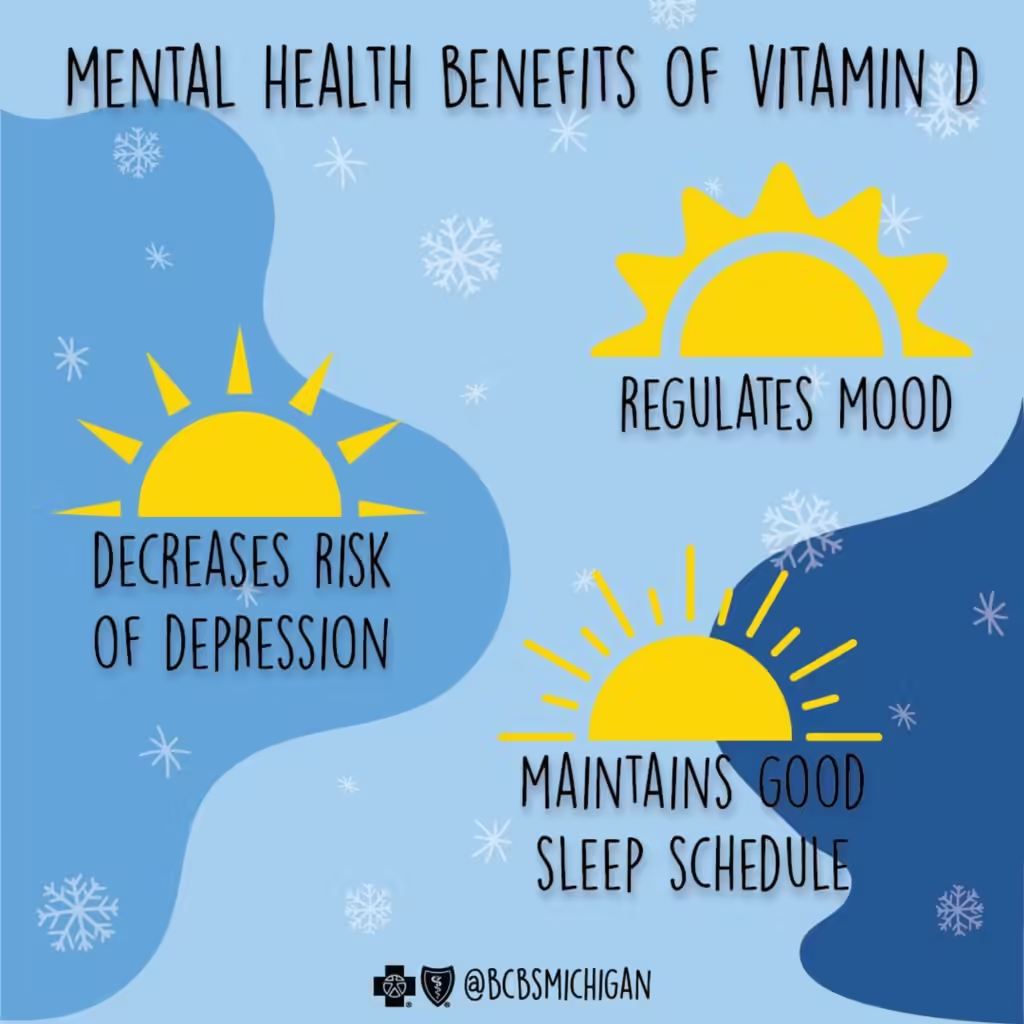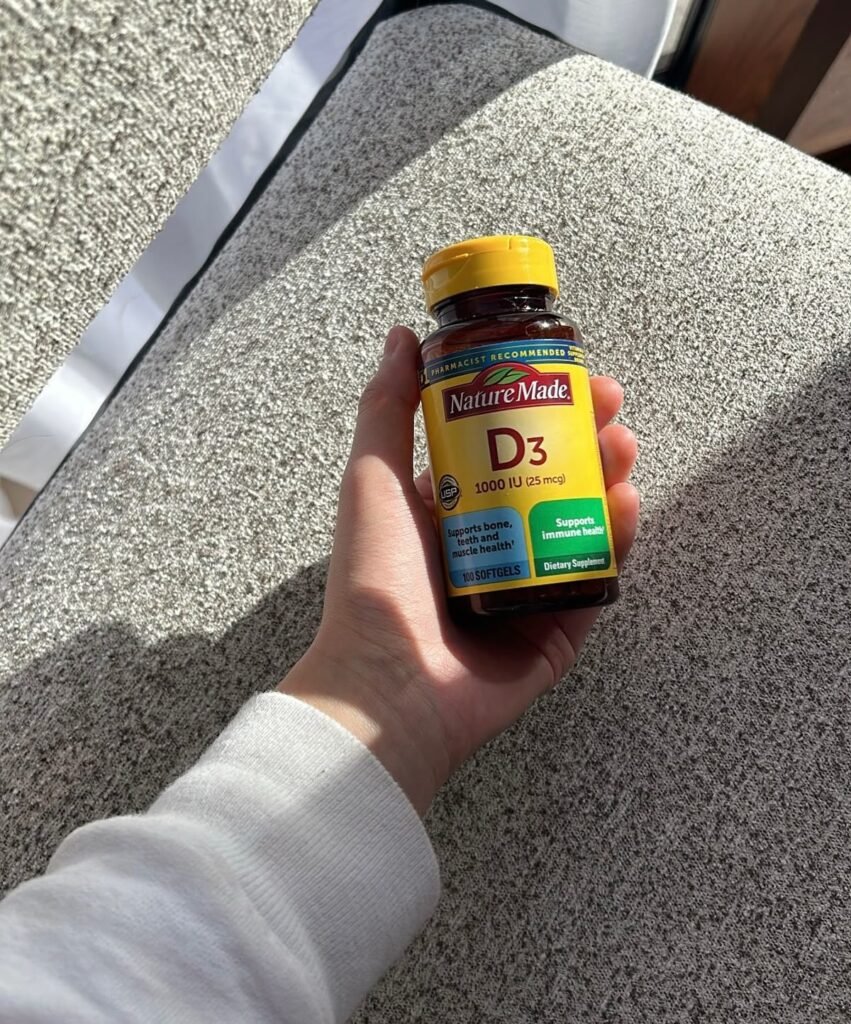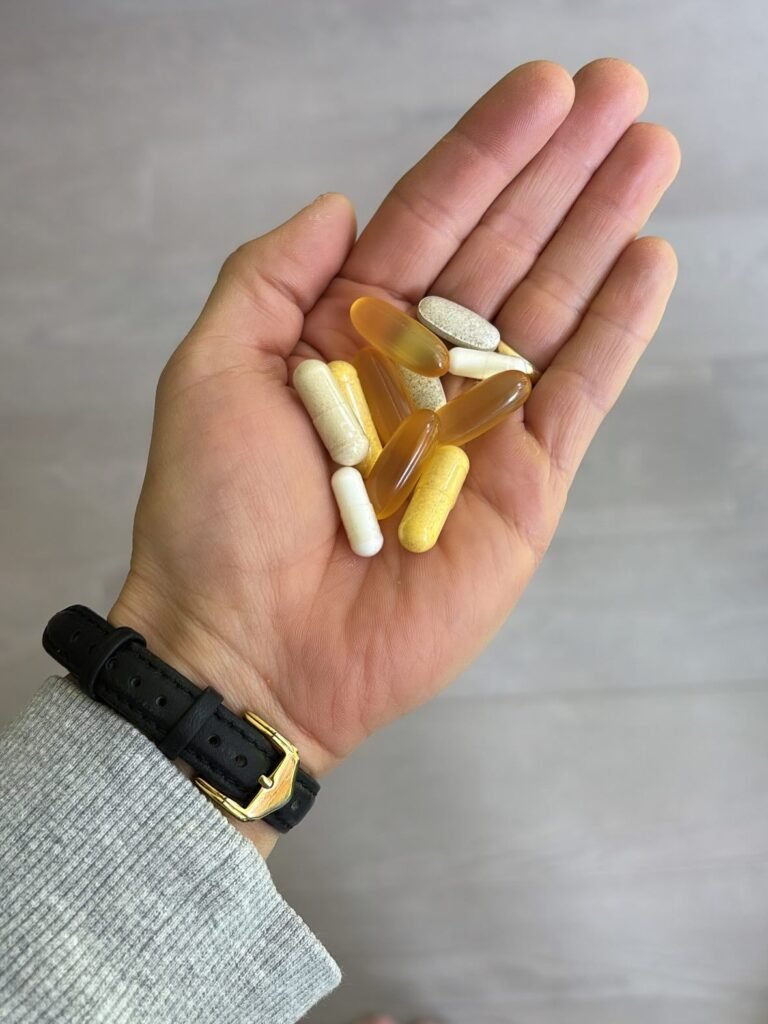Vitamin D and Sunlight Exposure: Why Is It So Important?
Welcome, Wellness Warriors, to another deep dive into the essentials of optimal health. Today, we unravel the mysteries and immense importance of a nutrient often dubbed the “sunshine vitamin”: Vitamin D. More than just a simple nutrient, Vitamin D plays an important role in virtually every bodily function, from the strength of our bones to the resilience of our immune system. In a world increasingly spent indoors, understanding how we acquire adequate vitamin D levelsand why it matters is paramount to our overall health and vitality.
For decades, scientists have lauded Vitamin D’s critical role in bone health, primarily its ability to regulate calcium and phosphate, essential minerals for developing and maintaining healthy bones and preventing conditions like rickets in children and osteoporosis in adults. But the science has evolved, revealing a far more expansive array of health benefitslinked to this unique fat-soluble vitamin. From chronic disease prevention to mental health support, Vitamin D’s influence is truly pervasive.
One of the most important vitamin to get on a daily basis !
The Sunshine Vitamin: How Our Bodies Make Vitamin D

The primary and most efficient way our bodies produce Vitamin D is through exposure to direct sunlight. When our skin is exposed to ultraviolet B (UVB) radiation from the sun’s rays, a cholesterol-like molecule in the skin absorbs the energy and begins a complex process of vitamin D production. This is why it’s often called the “sunshine vitamin.”
The amount of much vitamin D produced depends on several factors, including the time of day, time of year, skin color, and geographical location. For instance, in many parts of the United States and other temperate regions, UVB radiation is most potent during the middle of the day, typically between 10 AM and 3 PM. During the winter months, particularly at higher latitudes, the angle of the sun means that UVB radiation is often too weak to stimulate vitamin D production effectively. This seasonal variation significantly impacts adequate vitamin D levels for many individuals.

Skin color is another crucial determinant. Melanin, the pigment responsible for darker skin tones, acts as a natural sunscreen, reducing the skin’s ability to produce Vitamin D from sunlight exposure. Individuals with darker skin tonesrequire significantly more minutes of sun exposure than those with lighter skin to produce the same amount of Vitamin D. This is a key factor contributing to the higher risk of vitamin D deficiency among certain populations.
Furthermore, cloud cover can also impede UVB radiation from reaching the skin, as can air pollution. Even wearing protective clothing or staying behind glass will block UV rays necessary for vitamin D production.
Why is Vitamin D So Important? Beyond Bone Health

While its role in bone health is undeniable – it ensures proper absorption of much calcium and phosphorus, crucial for strong bones and preventing conditions like osteomalacia and osteoporosis, which increase the risk of bone fractures – the impact of enough vitamin D extends far beyond the skeletal system.
READ MORE: Melatonin: All You Have to Know For Better Sleep – WW Facts
Immune System Support

Perhaps one of the most compelling reasons for maintaining optimal levels of Vitamin D is its profound influence on the immune system. Vitamin D modulates both innate and adaptive immune responses. It helps activate T cells and macrophages, critical components of our body’s defense mechanisms. A lack of vitamin D has been linked to an increased susceptibility to infections, including respiratory tract infections, and a higher incidence of autoimmune diseases such. These include:
- Rheumatoid arthritis: A chronic inflammatory disorder affecting joints.
- Inflammatory bowel disease (IBD), encompassing conditions like Crohn’s disease and ulcerative colitis, which involve chronic inflammation of the digestive tract.
- Multiple sclerosis: A chronic disease affecting the central nervous system.
Research suggests that adequate vitamin D levels may play an important role in regulating the immune response, potentially dampening excessive inflammation and reducing the risk of developing or worsening these conditions.
Cardiovascular Health

Emerging research points to a connection between low levels of vitamin D and an increased risk of cardiovascular disease, including hypertension (blood pressure) and heart failure. While the exact mechanisms are still being fully understood, Vitamin D receptors are found on various cardiovascular cells, suggesting a direct influence on heart function and blood vessel health. Some studies indicate that sufficient vitamin D supplementation might help regulate blood pressure and improve arterial stiffness.
Cancer Prevention

While more research is needed, some observational studies suggest that higher levels of vitamin D may be associated with a reduced risk of certain cancers, including breast cancer, colon cancer, and prostate cancer. It is hypothesized that Vitamin D may influence cell growth, differentiation, and apoptosis (programmed cell death), potentially inhibiting the development and progression of cancer cells.
Mental Health and Neurological Function

The link between Vitamin D and mental health is gaining significant attention. Receptors for Vitamin D are found in areas of the brain associated with mood regulation. Low vitamin D levels have been correlated with an increased risk of depression, anxiety, and seasonal affective disorder (SAD), a type of depression that occurs during the winter monthswhen sunlight exposure is limited. Ensuring sufficient vitamin D could be a valuable component of a holistic approach to mental well-being.
Muscle Function and Strength

Vitamin D is crucial for healthy muscle function. It impacts muscle strength, balance, and coordination. Low vitamin D levels can contribute to muscle weakness, particularly in older adults, increasing their risk of falls and bone fractures. This highlights another critical link between Vitamin D and overall physical well-being.
Other Potential Benefits
Beyond these major areas, Vitamin D is being investigated for its potential role in:
- Diabetes management: Influencing insulin secretion and sensitivity.
- Weight management: As Vitamin D can be stored in fat cells, individuals with higher body fat may have less vitamin D circulating in their blood.
- Autoimmune conditions: Beyond those listed, research continues into its role in other autoimmune responses.
The Risk of Vitamin D Deficiency: A Global Concern

Despite the widespread availability of sunlight, vitamin D deficiency is remarkably common worldwide. Estimates suggest that a significant portion of the global population has low vitamin D levels, with some studies indicating over a billion people. Several factors contribute to this pervasive problem:
- Reduced Sunlight Exposure: Modern lifestyles often involve spending most of our time of day indoors, limiting our exposure to direct sunlight. Office work, indoor hobbies, and increased screen time all contribute.
- Geographical Location: As mentioned, living in higher latitudes, especially during the winter months, means less potent UVB radiation.
- Sunscreen Use: While vital for preventing risk of skin cancer, sunscreen use significantly blocks UVB radiationnecessary for vitamin D production. An SPF of 15 can block up to 99% of UVB rays. While sunscreen is essential for sun protection, balancing its use with adequate, safe sunlight exposure is a nuanced discussion.
- Skin Color: Individuals with darker skin tones naturally produce less vitamin D from the same amount of sunlight exposure due to higher melanin content.
- Age: As people age, their skin’s ability to synthesize Vitamin D from sunlight decreases. Older adults are therefore at a higher risk of deficiency.
- Medical Conditions: Certain medical conditionscan impair Vitamin D absorption or metabolism. These include:
- Celiac disease
- Crohn’s disease
- Inflammatory bowel disease (general malabsorption issues)
- Kidney disease (which plays a crucial role in converting inactive Vitamin D to its active form of the vitamin)
- Liver disease
- Cystic fibrosis
- Obesity (Vitamin D gets sequestered in fat cells)
- Limited Dietary Intake: While few foods naturally contain much vitamin D, relying solely on diet is often insufficient to meet requirements.
- Breastfeeding without Supplementation: Breast milk is naturally low in Vitamin D. The American Academy of Pediatrics recommends that all breastfed infants receive vitamin D supplements from birth.
Vitamin D and mental health

While Vitamin D is best known for bone health, receptors for this fat-soluble vitamin are found in areas of the brain associated with mood regulation, indicating its important role beyond the skeletal system.
Studies have correlated low vitamin D levels with an increased risk of depression, anxiety, and seasonal affective disorder (SAD), which often occurs during the winter months due to limited sunlight exposure. It’s thought that Vitamin D influences the synthesis of neurotransmitters like serotonin and dopamine, which are crucial for maintaining a balanced mood. It also possesses anti-inflammatory properties, potentially mitigating chronic inflammation that can contribute to mental health issues.

While the exact causal relationship is still being researched, individuals experiencing persistent mood changes, fatigue, or feelings of sadness are often encouraged to have their vitamin D levels checked via a blood test. Ensuring adequate vitamin D levels, whether through sensible sunlight exposure, dietary sources like fatty fish, or vitamin D supplements, can be a valuable component of a holistic approach to supporting overall health and well-being.
How Much Vitamin D Do We Need? Recommendations and Sources

Determining the recommended daily amount of vitamin D can be complex and may vary based on age, geographical location, skin color, and individual health status. The standard unit for Vitamin D is the International Unit (IU).
Current recommendations from various health organizations often suggest:
- Infants (0-12 months): 400 IU (10 micrograms)
- Children and Adults (1-70 years): 600 IU (15 micrograms)
- Older Adults (>70 years): 800 IU (20 micrograms)
However, many experts, including those who treat individuals with low vitamin D levels, advocate for higher intakes to achieve optimal levels, often ranging from 1000 IU to 4000 IU daily, depending on individual needs and blood testresults. It’s crucial to consult a healthcare provider or health care provider to determine your specific requirements.
For most people with lighter skin, around 10-15 minutes of sun exposure to hands, face, and arms around the middle of the day (10 AM to 3 PM) a few times a week is often enough.
For darker skin tones, this might extend to 30 minutes or more due to higher melanin content. Always prioritize sun protection like sunscreen use and seeking shade after this short period to avoid risk of skin cancer
Getting Vitamin D from the Sun: The Best Way?

For many, sunlight exposure remains the best way to get Vitamin D. However, achieving sufficient vitamin D from the sun requires a balanced approach to avoid the risk of skin cancer.
General guidelines for sunlight exposure for vitamin D production often suggest:
- Time of day: Around the middle of the day (10 AM to 3 PM) when the UVB radiation is strongest.
- Duration: Typically 10-30 minutes of sun exposure to hands, face, and arms, a few times per week for lighter-skinned individuals. Individuals with darker skin tones may need significantly longer, sometimes up to an hour or more.
- No Sunscreen: For the purpose of vitamin D production, sunscreen use should be avoided during these brief periods of exposure. However, prolonged exposure without sun protection increases the risk of skin cancer. The good news is that enough Vitamin D can usually be made before there’s a significant burn risk. Once enough Vitamin D has been synthesized, further exposure to the sun will not result in more Vitamin D production, as the body regulates the process. This is why it’s important to know when to start using sun protection.
- Location: The further you are from the equator, the less vitamin D you’ll produce during certain time of year, especially the winter months. Even in sunny climates, factors like cloud cover and air pollution can reduce effective solar radiation.
It’s a delicate balance: while we need much sun for Vitamin D, we must also be mindful of much exposure and the potential for skin damage. The goal is responsible sunlight exposure.
Dietary Sources of Vitamin D

Few foods naturally contain much vitamin D. The richest natural dietary sources include:
- Fatty fish or oily fish like salmon, mackerel, tuna, and sardines. Wild-caught salmon generally has higher levels than farmed.
- Cod liver oil is an excellent source and often contains a high concentration of Vitamin D.
- Egg yolks contain a small amount, though you’d need to eat many to get significant amounts.
Many foods are fortified with Vitamin D, especially in countries like the United States and Canada. These include:
- Dairy products like milk and yogurt.
- Plant-based milks (almond milk, soy milk, oat milk).
- Breakfast cereals.
- Some brands of orange juice.
While dietary sources contribute, they are often insufficient to meet daily needs, especially for those with a higher risk of deficiency.
Vitamin D Supplements: A Necessary Complement

For many individuals, particularly those at higher risk of low vitamin D levels, vitamin D supplements are a safe and effective way to ensure adequate vitamin D levels. This is especially true during the winter months or for those with limited sunlight exposure.
When choosing vitamin D supplementation, look for Vitamin D3 (cholecalciferol), which is the form naturally produced by the skin and is more effective at raising blood levels than Vitamin D2 (ergocalciferol).
- Dosage: Work with your healthcare provider to determine the appropriate dosage. A blood test to measure 25-hydroxyvitamin D levels is the most accurate way to assess your Vitamin D status and guide supplementation.
- Daily supplement: For many, a daily supplement of 1000-2000 IU is a reasonable starting point, but this should be individualized.
- High-dose supplements: In cases of severe deficiency, a healthcare provider may prescribe high-dose supplements for a period to quickly replenish stores, followed by a maintenance dose.
- Safety: While Vitamin D is generally safe, excessive intake from supplements can lead to toxicity, although this is rare. Symptoms of toxicity include nausea, vomiting, weakness, and kidney problems due to high calcium levels (hypercalcemia). This is virtually impossible to achieve from sunlight exposure alone, as the body self-regulates.
Monitoring Your Vitamin D Levels

The only definitive way to know your Vitamin D status is through a blood test that measures 25-hydroxyvitamin D (25(OH)D) levels.
- Deficient: Below 20 ng/mL (50 nmol/L)
- Insufficient: 20-29 ng/mL (50-74 nmol/L)
- Sufficient/Optimal: 30-60 ng/mL (75-150 nmol/L)
- Potentially Harmful: Above 100 ng/mL (250 nmol/L)
Regular monitoring, especially for those with medical conditions affecting Vitamin D absorption or those on vitamin D supplementation, is crucial to maintain optimal levels and ensure your overall health.
The Big Picture: Embracing the Sunshine for Wellness

In conclusion, Vitamin D is far more than just a nutrient for bone health. It’s a powerhouse, influencing our immune system, cardiovascular disease risk, mental health, muscle function, and potentially offering protection against various chronic diseases. The primary source, sunlight exposure, offers the best way to synthesize this vital fat-soluble vitamin, but it must be approached with caution to mitigate the risk of skin cancer from excessive UV radiation.
For many of us, especially during the winter months or for those with specific risk factors like darker skin tones or medical conditions affecting absorption, vitamin D supplements become an invaluable tool to bridge the gap and ensure adequate vitamin D levels.
The good news is that with awareness, responsible sun protection practices, and potentially a daily supplement, we can all work towards achieving healthy levels of the sunshine vitamin. Consult your healthcare provider to assess your individual needs and embark on your journey to optimal Vitamin D status. As Wellness Warriors, understanding and prioritizing our Vitamin D intake is a vital step towards a healthier, more vibrant life. The power of the sun and the benefits of this remarkable vitamin await us.

